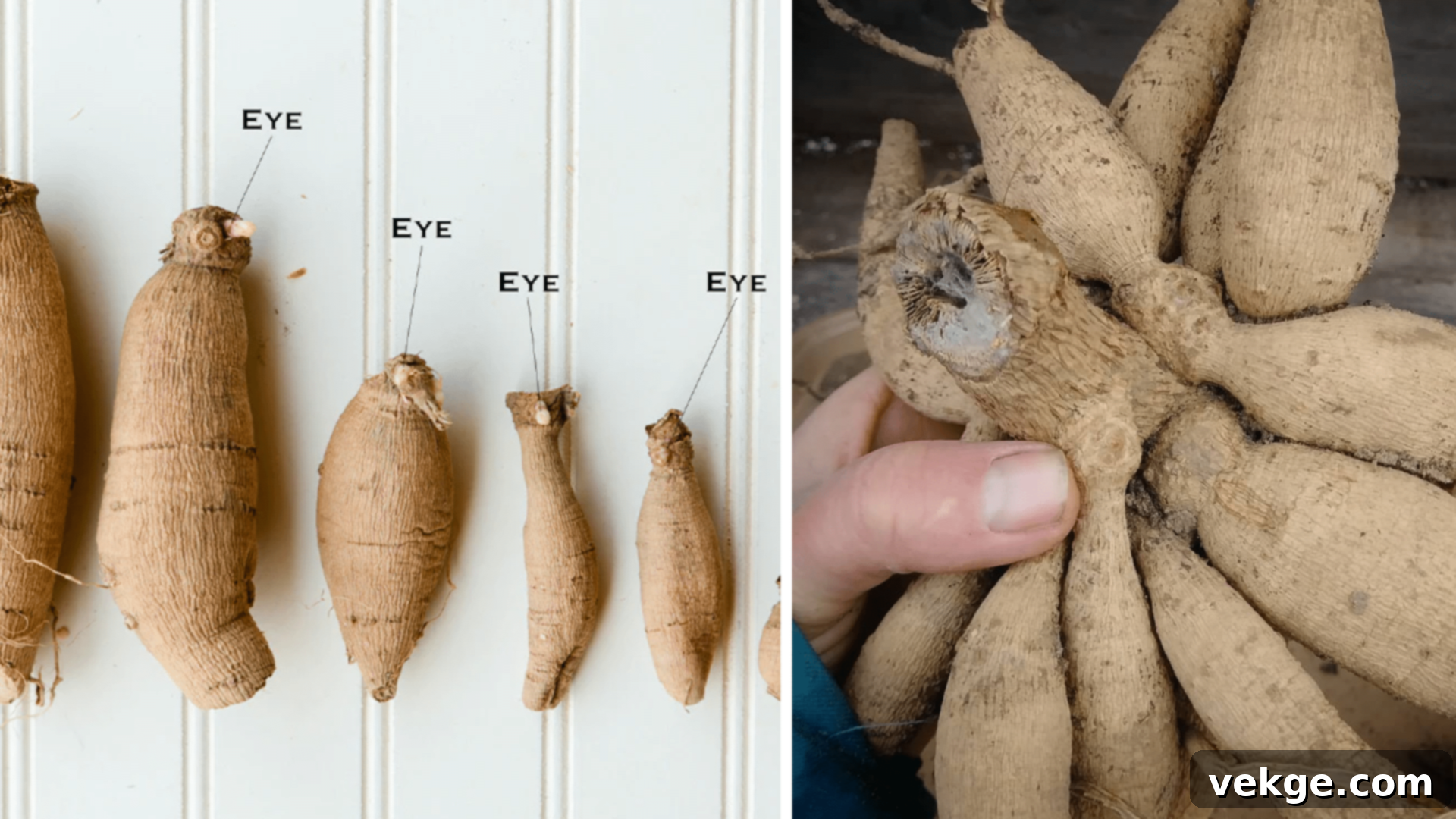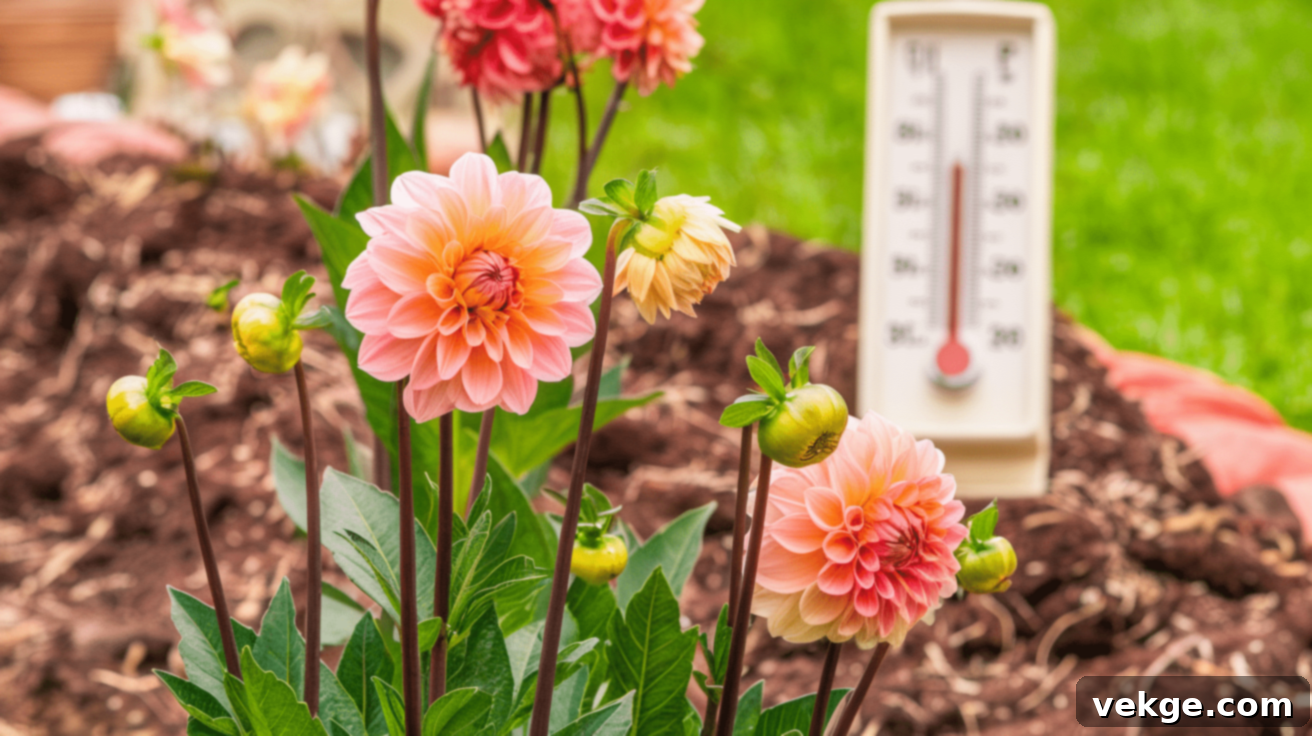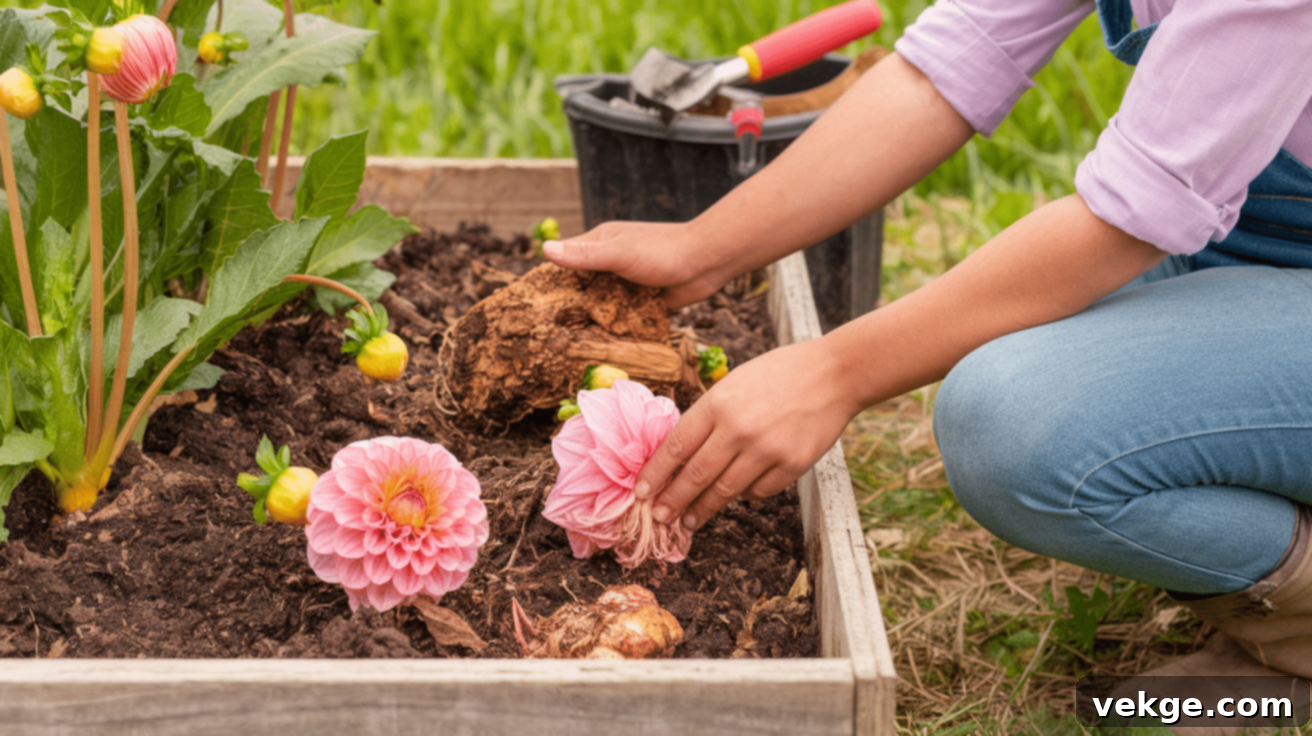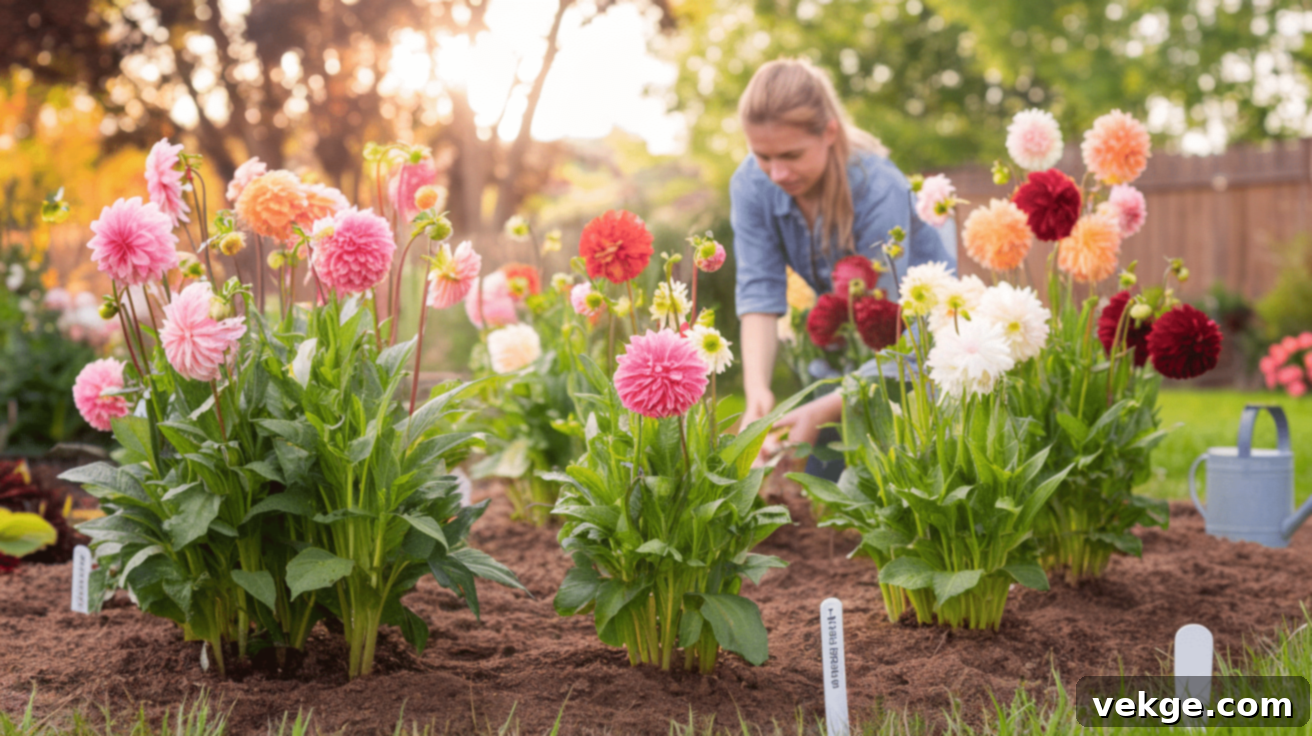Ultimate Guide to Growing Dahlias: From Tuber to Stunning Blooms
Growing dahlias can be one of the most rewarding and exciting experiences for any gardener. These magnificent flowers, with their incredible diversity in color, shape, and size, can transform any garden into a vibrant masterpiece. This comprehensive guide is designed to help both novice and experienced gardeners master the art of dahlia cultivation, ensuring your plants grow strong, healthy, and produce an abundance of breathtaking blooms.
Throughout this article, you’ll discover essential insights on every stage of the dahlia growing journey. We’ll cover everything from selecting the right dahlia tubers and preparing your garden soil, to understanding optimal planting times, accelerating sprouting and blooming, and effectively troubleshooting common growing problems. Our aim is to equip you with the knowledge and practical tips needed to cultivate a garden overflowing with bright, happy, and spectacular dahlia flowers.
Whether you’re aiming for an early flush of color or a continuous display throughout the season, the information provided here will guide you toward creating the dahlia garden of your dreams. Get ready to unlock the secrets to successful dahlia growing and enjoy the unparalleled beauty these flowers bring.
How Long Do Dahlias Take to Sprout from Tubers?
One of the most frequently asked questions by eager dahlia growers is, “How long until I see signs of life?” Typically, dahlia tubers take about 2 to 4 weeks to sprout after planting. However, it’s crucial to understand that this timeframe is an estimate, and some tubers might take a little longer, potentially up to 8 weeks, before you observe any visible growth. Patience is definitely a virtue when growing dahlias!
The waiting period for sprouting is influenced by several critical factors:
- Dahlia Variety: Different dahlia types possess varying growth rates. Some varieties are naturally more vigorous and will push out shoots quickly, while others require a longer dormancy period and a slower awakening.
- Soil Temperature: This is perhaps the most significant factor. Dahlias are warm-season plants and thrive when soil temperatures are consistently above 60°F (15°C). If the soil remains too cold, the tubers will simply sit dormant, conserving energy and delaying sprouting. Cold, wet soil can also lead to tuber rot.
- Air Temperature: While soil temperature is primary, ambient air temperature also contributes. Consistent warmth above ground encourages active metabolism within the tuber, prompting it to sprout.
- Moisture Levels: Tubers need moisture to break dormancy, but too much water before active growth can lead to rot. The soil should be consistently moist but never waterlogged.
- Tuber Health and Size: Healthy, plump tubers with visible “eyes” (small bumps where shoots emerge) tend to sprout faster than smaller, shriveled, or damaged tubers.
- Location and Climate Zone: Gardeners in warmer climate zones with longer growing seasons often experience faster sprouting compared to those in cooler, more northern regions where the ground takes longer to warm up.
For the best and fastest sprouting results, always plant your dahlia tubers when the danger of the last spring frost has passed and the soil has naturally warmed up in your specific area. Using a soil thermometer can be incredibly helpful to gauge readiness.
Popular Dahlia Varieties: Fastest vs. Slowest Bloomers

While all dahlias offer spectacular beauty, some varieties are known for their eagerness to sprout and bloom, providing earlier garden color. Understanding these differences can significantly help in planning your garden for a continuous display.
Fast-Blooming Dahlia Varieties
Some dahlia types are celebrated for their relatively quick journey from tuber to bloom. Varieties such as Linda’s Baby, Wizard of Oz, Peaches ‘n Cream, and Wyoming Wedding are frequently cited among the fastest-growing options. These quick-sprouting dahlias often show their first signs of growth and reach the blooming stage sooner than their standard counterparts.
Typically, these speedy varieties can transition from sprouting to their first magnificent blooms in approximately 75-85 days. This is a noticeable advantage over many standard dahlia varieties, which often require 90-100 days, or sometimes even more, to reach their peak flowering stage.
Choosing these faster bloomers can be an excellent strategy if you live in a region with a shorter growing season or if you simply desire earlier flowers. They allow you to enjoy vibrant dahlia displays sooner, extending your garden’s period of interest.
Standard and Later-Blooming Dahlia Varieties
While some dahlias are quick off the mark, many other popular varieties follow a more traditional timeline, blooming later in the season. These include many of the larger, dinner-plate sized dahlias like ‘Kelvin Floodlight’ or complex forms such as ‘Café au Lait’. Though they may take longer to flower, their mature size and often spectacular blooms are well worth the wait.
Strategic Planting for Extended Blooms
To achieve a longer and more continuous blooming season in your garden, consider planting a mix of both fast-growing and standard dahlia varieties simultaneously. The faster types will provide an early burst of color, while the standard varieties will follow, ensuring a succession of blooms that can last well into the fall, until the first hard frost. This staggered bloom approach maximizes your garden’s appeal and keeps it dynamic throughout the summer and autumn months.
Key Factors Influencing Dahlia Bloom Time

Beyond the inherent genetics of a dahlia variety, several environmental and cultural factors significantly impact when your dahlias will bloom and how profusely. Understanding and managing these factors is essential for maximizing your dahlia’s flowering potential.
Climate and Temperature
Dahlias are sun-loving, warm-season plants. Warm weather accelerates dahlia growth, triggering earlier and more abundant blooms. In consistently hot regions, with daytime temperatures between 70-80°F (21-27°C) and nighttime temperatures above 50°F (10°C), flowers tend to appear more quickly. Conversely, in cooler areas or during unseasonably cold spells, plant development slows down considerably, delaying flowering.
It’s crucial for gardeners to wait for consistent warmth after the last frost date before expecting full flowering. Providing some protection or starting tubers indoors can help mitigate the effects of cooler springs.
Soil Preparation and Drainage
The foundation for healthy dahlia growth and prolific blooms lies in well-prepared soil. Dahlias thrive in loamy, well-draining soil with a slightly acidic to neutral pH (6.5-7.0). Soil that is too heavy, like clay, or overly compacted will impede root development and lead to waterlogged conditions, which are detrimental to dahlia tubers.
To improve drainage and provide essential nutrients, generously mix in organic matter such as compost, well-rotted manure, or peat moss into your planting beds. Good drainage is paramount; dahlias absolutely detest “wet feet,” which can quickly lead to tuber rot and ultimately, plant failure. Raised beds are an excellent solution for areas with poor natural drainage.
Sunlight Requirements
Dahlias are sun worshippers. For optimal growth and a spectacular bloom display, they require a minimum of 6-8 hours of direct sunlight per day. In regions with extremely hot and intense afternoon sun, some dappled shade during the hottest part of the day can be beneficial, but generally, more sun equals more flowers. Insufficient sunlight will result in leggy plants, fewer buds, and overall weaker performance.
Consistent Watering Regimen
After sprouting, dahlias need consistent moisture to fuel their rapid growth and flower production. The key is deep, infrequent watering rather than shallow, frequent sprinkles. Allow the top few inches of soil to dry out between waterings to prevent oversaturation, but ensure the root zone remains adequately moist. During dry spells or peak blooming, dahlias may require watering several times a week. Underwatered plants will show stress through wilting leaves and reduced flowering.
Proper Fertilization
Dahlias are heavy feeders, but the type and timing of fertilizer are important. Once plants are actively growing and established, feed them with a balanced, low-nitrogen fertilizer (e.g., 5-10-10 or 10-20-20) every 3-4 weeks. Excess nitrogen promotes lush foliage at the expense of flowers. Switching to a fertilizer with a higher phosphorus and potassium content as buds begin to form can encourage more abundant and vibrant blooms.
Pinching and Deadheading
These cultural practices are vital for maximizing bloom production. Pinching (removing the central growth tip of young plants) encourages bushier growth and more flower stems. Deadheading (removing spent blooms) prevents the plant from setting seed, redirecting its energy into producing more flowers rather than developing seeds.
How to Make Dahlias Bloom Faster
While patience is a virtue, there are several effective techniques gardeners can employ to give their dahlias a head start and encourage earlier, more profuse blooming. By optimizing conditions from the very beginning, you can enjoy your stunning dahlia flowers sooner.
1. Indoor Potting and Pre-Sprouting Guide
To significantly accelerate the blooming process, consider starting your dahlia tubers indoors 4-6 weeks before your last anticipated frost date. This technique, known as “pre-sprouting,” allows tubers to develop roots and shoots in a controlled, warm environment before outdoor conditions are ideal.
Steps for Indoor Pre-Sprouting:
- Choose Containers: Select relatively large pots (1-gallon or 6-8 inches in diameter) with excellent drainage holes.
- Potting Medium: Fill pots with a rich, light, and well-draining potting mix. A blend designed for vegetables or general purpose is usually suitable.
- Planting Tubers: Place one dahlia tuber per pot, about 4 inches deep, with the “eye” (the small bud from which the stem will grow) facing upward. Gently cover with soil.
- Warmth and Light: Position the pots in a warm spot, ideally with consistent temperatures around 65-70°F (18-21°C). Once sprouts emerge, provide plenty of bright, indirect sunlight or use grow lights to prevent them from becoming leggy.
- Watering: Water sparingly at first, just enough to moisten the soil. As sprouts develop, gradually increase watering, keeping the soil consistently moist but never soggy.
Once the danger of frost has passed and outdoor soil temperatures are appropriate, gradually acclimate your pre-sprouted dahlias to outdoor conditions over a week or two (“hardening off”) before transplanting them to your garden beds.
2. Optimal Outdoor Planting and Soil Warming Techniques
Even for tubers planted directly outdoors, you can create conditions that encourage faster growth:
- Soil Warming Materials: Utilize materials that absorb and retain heat. Laying black landscape fabric or placing dark-colored bricks or stones around your planting area can significantly warm the soil faster in spring. These materials absorb sunlight, creating a warmer microclimate that promotes earlier root activity and growth.
- Raised Beds: Planting dahlias in raised beds can also lead to faster warming of the soil, as they are elevated and exposed to more sun and air circulation.
- Strategic Planting Location: Choose a spot that receives full sun exposure throughout the day and is sheltered from strong winds, which can stress young plants.
- Proper Spacing: Give your dahlias adequate space (18-36 inches apart depending on variety) to ensure good air circulation and prevent competition for resources, leading to healthier and faster growth.
3. Consistent Watering, Feeding, and Care
Once planted, consistent care is paramount for rapid growth and early blooms:
- Watering: Begin watering carefully after planting, especially after sprouts emerge. Keep the soil consistently moist, but avoid overwatering. Water deeply when the top few inches of soil feel dry to the touch. Consistent moisture helps dahlias develop strong root systems and supports vigorous stem and flower development.
- Feeding: As mentioned, dahlias are heavy feeders. Once plants are established and about 6-8 inches tall, begin a regular fertilization schedule with a low-nitrogen, high-phosphorus/potassium fertilizer every 3-4 weeks.
- Pinching: When your dahlia plant has developed 3-4 sets of leaves (typically when it’s about 8-12 inches tall), pinch out the central growing tip. This encourages the plant to branch out, producing more stems and ultimately more flowers. It might delay the first bloom by a week or two, but it results in a much bushier plant with significantly more flowers overall.
Common Mistakes That Delay Dahlia’s Growth and Blooming
Growing dahlias can be immensely rewarding, but even experienced gardeners can make simple errors that impede plant development and delay those coveted blooms. Recognizing and avoiding these common pitfalls is key to cultivating healthier, faster-blooming dahlias.
- Planting Too Early: This is one of the most frequent mistakes. Cold soil temperatures (below 60°F or 15°C) will stop dahlia tuber growth completely and can lead to tuber rot. Always wait until the danger of frost has passed and the soil has consistently warmed up.
- Overwatering Before Growth: Before a dahlia tuber has sprouted and developed a root system, it doesn’t require much water. Excess water in the soil will literally drown the tuber, depriving it of oxygen and causing it to rot before it even has a chance to sprout. Keep the soil lightly moist, not soaked, especially immediately after planting.
- Soggy or Poorly Drained Conditions: Dahlias cannot tolerate “wet feet.” Heavy, clay-rich, or compacted soil that retains too much moisture will inevitably lead to root and tuber rot. Always choose well-draining locations or amend your soil heavily with organic matter to improve drainage. Raised beds are an excellent solution for problem areas.
- Planting Too Deep or Too Shallow:
- Too Deep: Tubers buried too far down (more than 4-6 inches) will struggle to emerge, expending too much energy pushing through soil, leading to delayed sprouting or failure to sprout at all.
- Too Shallow: Tubers planted too close to the surface can be exposed to temperature fluctuations, dry out quickly, or even get pushed out of the soil.
The ideal depth is typically 4-6 inches, with the ‘eye’ pointing upwards.
- Poor Soil Selection: Trying to grow dahlias in nutrient-poor, compacted, or extremely heavy clay soil will severely hinder root growth and nutrient uptake. Dahlias thrive in loose, airy, fertile, and well-draining soil mixes. Always amend your garden beds with ample compost or other organic matter.
- Ignoring Soil Temperature: As repeatedly emphasized, cold ground is a major deterrent to dahlia development. Using a soil thermometer is a simple way to avoid premature planting.
- Lack of Adequate Sunlight: Dahlias are sun-lovers. Planting them in a spot that receives less than 6 hours of direct sunlight per day will result in weak, leggy plants that produce fewer, smaller blooms, and often bloom much later.
- Improper Fertilization: Using too much high-nitrogen fertilizer will promote lush, green foliage at the expense of flower production. Balance is key; switch to a lower nitrogen formula once plants are established.
- Not Pinching Young Plants: Failing to pinch back young dahlia plants when they are about 8-12 inches tall can result in a single-stemmed plant with fewer blooms overall. Pinching encourages branching and a bushier, more floriferous plant.
Troubleshooting Dahlia Growth Issues Early

It can be disheartening when your dahlia plants show signs of distress or slow growth. However, addressing these issues early can often save your plant and get it back on track to producing beautiful blooms. Don’t panic; instead, methodically investigate the problem.
1. Check Soil Temperature and Conditions
If your dahlia is growing slowly or not sprouting, your first step should be to check the soil temperature. Dahlias absolutely require warm ground, ideally between 60-70°F (15-21°C), to grow properly. If the soil is too cold, the tuber will remain dormant or struggle.
Also, assess the soil’s moisture level and drainage. Is it waterlogged? Is it bone dry? Soggy, cold soil is a prime suspect for stunted growth and tuber rot. Ensure the soil is consistently moist but never saturated.
2. Inspect the Tubers (if no sprouts)
If weeks have passed and you see no sign of sprouting, carefully dig up a tuber to inspect it. Look for:
- Signs of Life: A healthy tuber should be firm to the touch, with small pink or white buds emerging from the ‘eyes’ near the stem end. These are the potential shoots.
- Signs of Rot: Soft, mushy, discolored (black or brown), or foul-smelling tubers are rotting. If the rot is extensive, the tuber might not be salvageable. If only a small portion is affected, you might be able to cut away the rotted part with a clean knife and replant the healthy portion in fresh, well-draining soil.
- Pests: Occasionally, pests like slugs or grubs can damage newly planted tubers.
3. Diagnose Leaf and Stem Issues
- Yellowing or Weak Sprouts: This often signals deeper problems, such as a lack of nutrients, insufficient sunlight, or even overwatering.
- Lack of Nutrients: Add compost or a balanced, low-nitrogen fertilizer to enrich the soil.
- Insufficient Sunlight: If your dahlias are in pots, move them to a brighter spot that receives at least 6-8 hours of direct sun. If in the ground, consider if nearby plants are casting too much shade.
- Overwatering: Allow the soil to dry out more between waterings. Ensure good drainage.
- Stunted Growth: Beyond temperature and water, stunted growth can indicate compacted soil preventing root expansion, or a severe nutrient deficiency. Consider adding mycorrhizal fungi to the soil to improve nutrient uptake.
- Pest Infestation: Inspect leaves and stems for common dahlia pests like aphids, spider mites, or thrips. Address infestations quickly with organic pesticides or insecticidal soap to prevent further damage that can hinder growth and blooming.
- Disease: Look for signs of fungal diseases (powdery mildew, botrytis) or viral diseases (mottling, distorted growth). Severely diseased plants may need to be removed to prevent spread.
The key to successful troubleshooting is early and thorough observation. Pay close attention to your plants’ subtle cues, and act promptly to rectify any issues.
Wrapping Up Your Dahlia Growing Journey
Growing dahlias is undoubtedly a journey that requires a blend of time, careful observation, and dedicated work. Each dahlia plant is unique, and its growth will be influenced by myriad factors, emphasizing that patience is perhaps the most valuable tool in a dahlia gardener’s arsenal. From the moment you plant a seemingly unassuming tuber to the spectacular unveiling of its vibrant blooms, the process is one of continuous learning and adaptation.
By diligently taking care of the soil, monitoring temperature conditions, providing adequate sunlight, watering consistently, and feeding your plants appropriately, you are laying the groundwork for them to not just survive, but truly thrive. Remember the importance of good drainage, the benefits of pre-sprouting, and the power of pinching for a bushier, more floriferous plant. With the right steps and a bit of nurturing, even a small, hesitant sprout can transform into a magnificent, show-stopping flower display that becomes the envy of your neighborhood.
This guide aims to instill confidence in gardeners of all levels, empowering you to embrace the challenge and immense satisfaction that comes with growing dahlias. Everyone has the potential to learn, improve their gardening skills, and cultivate these stunning flowers. Start small, pay close attention to the needs of your plants, and most importantly, enjoy the process of watching nature’s beauty come to life under your care. Gardening is, at its heart, an ongoing lesson in patience, perseverance, and celebrating the vibrant wonders of the natural world.
Frequently Asked Questions About Growing Dahlias
What Do Dahlias Look Like When They Sprout?
When dahlias first sprout, they typically emerge from small, pink or white buds, often called “eyes,” located on the crown of the tuber near where the previous year’s stem was attached. These buds swell and elongate into slender, often pale green or reddish shoots that push through the soil. Initially, these shoots will have small, tightly folded leaves. As they grow taller, the leaves will unfurl, displaying the characteristic foliage of the dahlia plant, which can vary in color and texture depending on the variety.
What to Do When Dahlias Start Sprouting?
Once your dahlias start sprouting, especially if you’ve pre-sprouted them indoors, several key steps are crucial:
- Provide Strong, Bright Light: Young dahlia shoots need plenty of light to grow strong and sturdy. Weak or insufficient light will cause them to become tall, spindly, and “leggy,” making them vulnerable and struggle when moved outside. Use grow lights or place them in a south-facing window.
- Consistent Watering: Keep the soil consistently moist, but avoid overwatering which can still lead to rot. Water when the top inch of soil feels dry.
- Harden Off: If started indoors, gradually acclimate your young plants to outdoor conditions (sun, wind, varying temperatures) over a period of 7-10 days before planting them in the ground. This process, called “hardening off,” prepares them for the harsher outdoor environment.
- Prepare for Transplanting: Once outdoor conditions are stable (after the last frost and soil has warmed), transplant your healthy, hardened-off dahlia plants into their prepared garden beds.
How Many Dahlias Grow from One Tuber?
A single dahlia tuber will grow into one individual dahlia plant. However, that one plant is often quite large and can produce a surprisingly large number of flowers throughout the growing season, typically ranging from 20 to 50 blooms or even up to 100 blooms for very vigorous varieties under ideal conditions. To achieve a dense display, experienced gardeners might plant several tubers. For example, planting five tubers per square meter, especially with proper care and pinching, can result in a magnificent display with dozens of blooms.
Do Dahlias Need Full Sun?
Yes, dahlias absolutely thrive in full sun. For optimal growth and an abundance of blooms, they require at least 6 to 8 hours of direct sunlight per day. In areas with intense afternoon sun, particularly in very hot climates, a location that provides some dappled shade during the hottest part of the day might be beneficial to prevent scorching. However, generally speaking, the more sun dahlias receive, the more prolific their flowering will be.
How Often Should I Water My Dahlias?
The frequency of watering dahlias depends on several factors, including climate, soil type, and the plant’s stage of growth.
- After Planting (before sprouting): Water very sparingly, just enough to moisten the soil. Overwatering at this stage can lead to tuber rot.
- After Sprouting and Early Growth: Once sprouts emerge and plants are actively growing, maintain consistent moisture. Water deeply when the top 1-2 inches of soil feel dry.
- During Peak Growth and Blooming: Dahlias are heavy drinkers during these stages. They may require watering 2-3 times per week, especially during dry spells or in hot climates. Always water deeply to encourage strong root development, allowing the water to penetrate several inches into the soil.
Always check the soil moisture before watering to avoid both overwatering and underwatering, both of which can stress the plant.
